Simplified hypertension control indicators
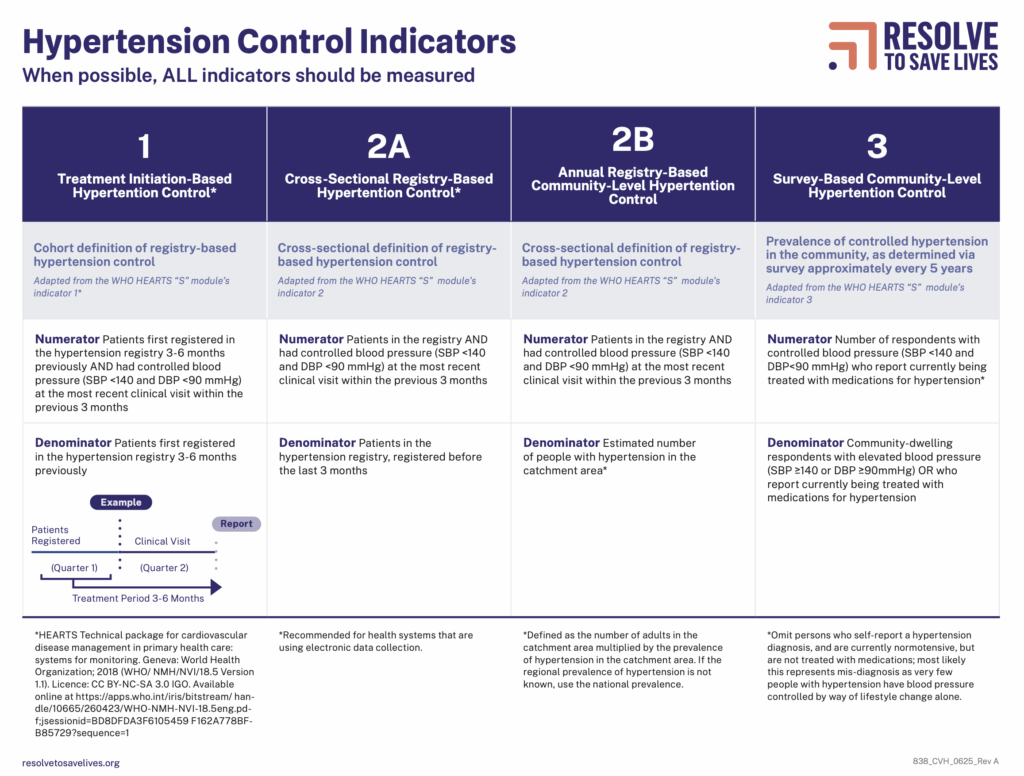
Simplified indicators adapted from the WHO HEARTS “S” module by Resolve to Save Lives
Watch: “One penny, one pill.” That’s all it costs to control high blood pressure.
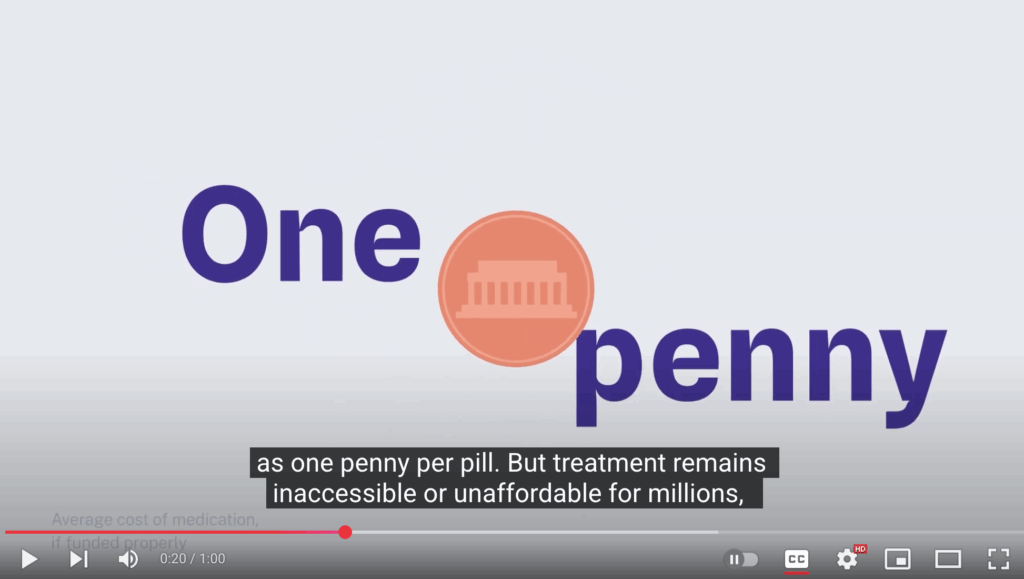
Blood pressure-lowering drugs can cost as little as one penny per pill. Governments, funders, and the private sector must prioritize improving accessibility of life-saving blood pressure-lowering medicines to increase global blood pressure control from 21% today to 50% by 2030. Doing so would help save 75 million lives and prevent 150 million heart attack and […]
Webinar: Protecting one billion hearts at the 78th World Health Assembly
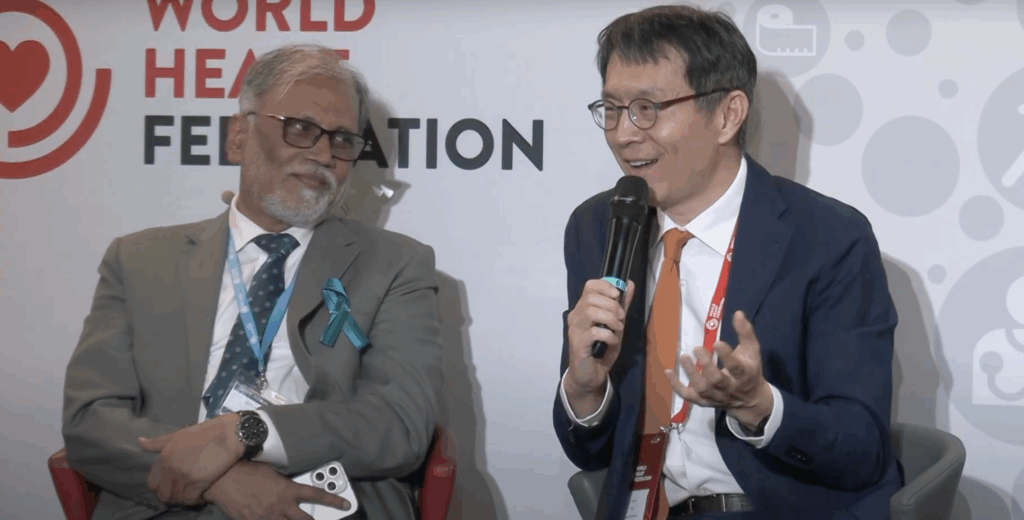
Highlighting the importance of access to medicines to control high blood pressure and the strategies needed to do it.
Four more countries validated by WHO for actions toward a trans fat-free world
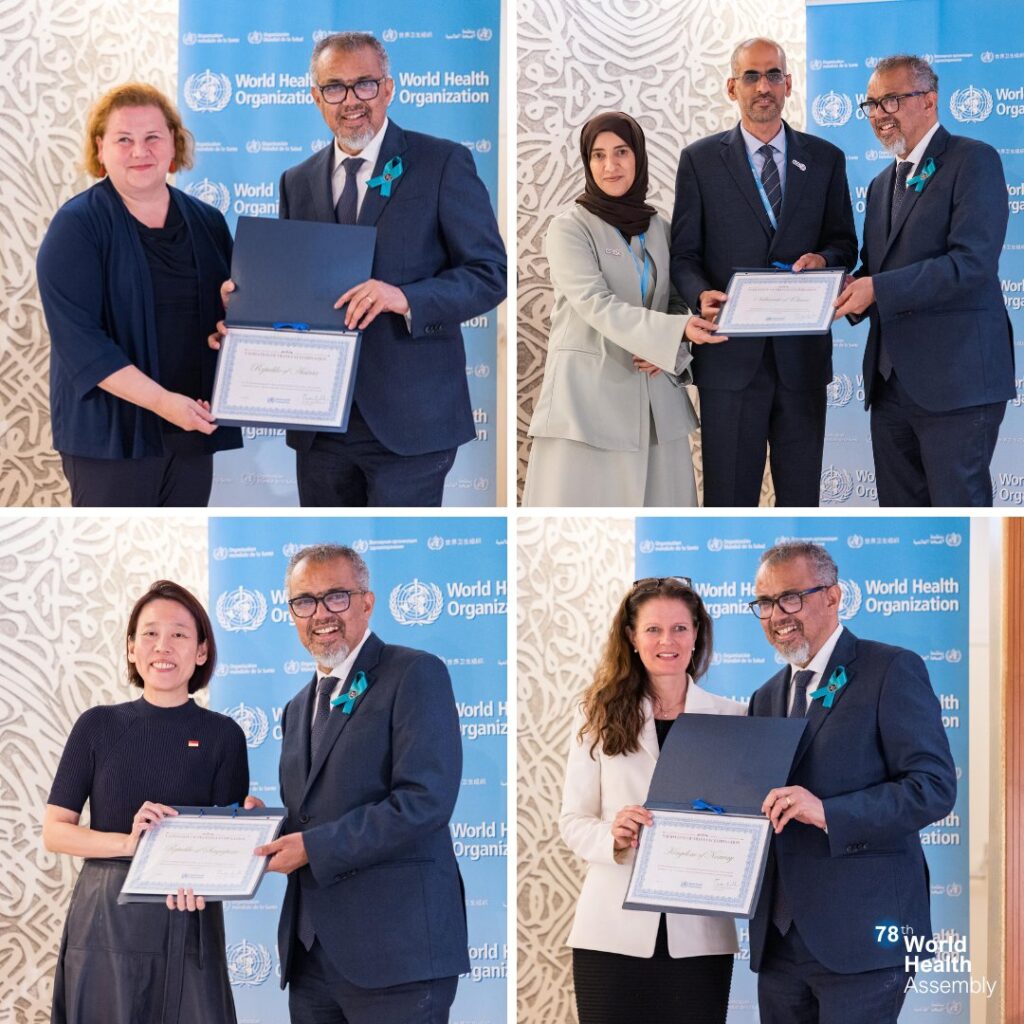
Austria, Norway, Oman, and Singapore awarded by WHO for concrete actions to remove toxic trans fat from the national food supply, bringing the total countries validated to nine.
Webinar unpacks industry’s role in removing trans fat from foods

New research commissioned by WHO and launched by ATNi and RTSL unpacks industry’s role in bringing the world closer to trans fat-free to save hundreds of thousands of lives each year.
Talking “Foundations for sustainable health” with Gates Foundation at the World Health Assembly

Launching our blueprint for epidemic-ready, climate resilient and sustainable primary health care.
Unleashing the full potential of 7-1-7
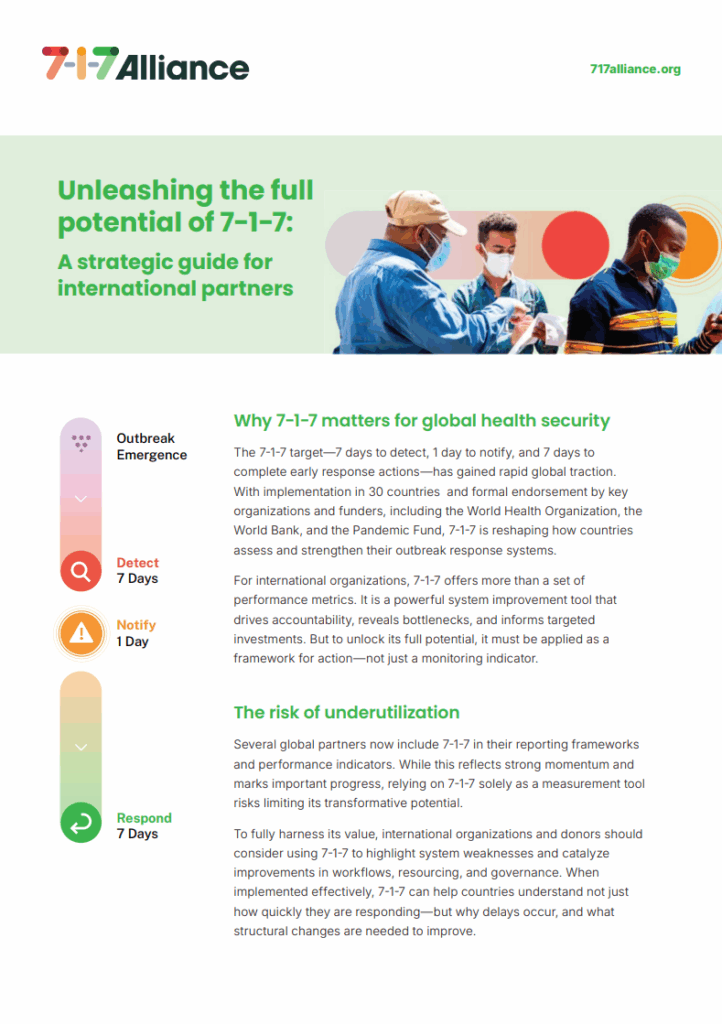
A strategic guide for international partners on the powerful system improvement tool that drives accountability, reveals bottlenecks, and informs targeted investments.
From signals to systems: Strengthening epidemic readiness through climate-informed strategies
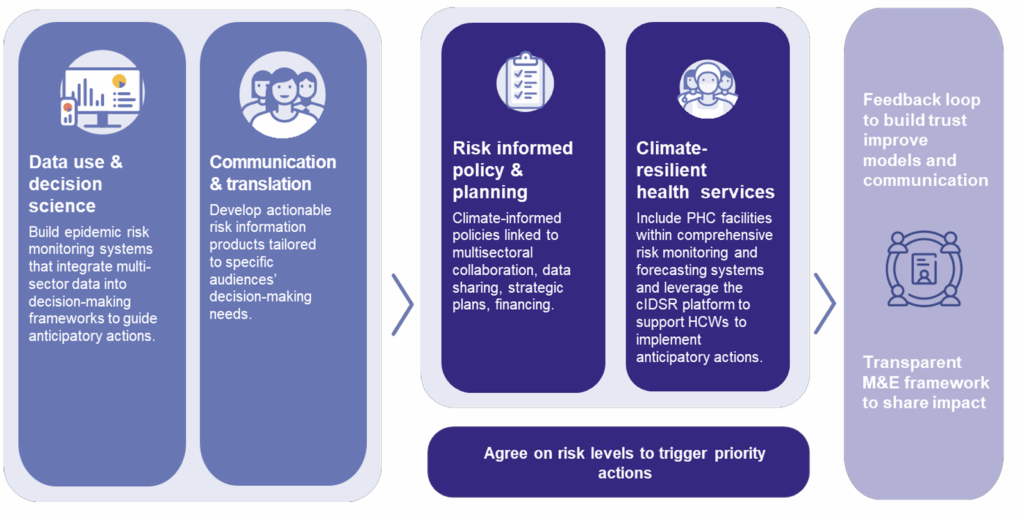
This issue brief outlines how Resolve to Save Lives is supporting governments to strengthen epidemic readiness by integrating climate data into health systems. Key strategies include building epidemic risk monitoring systems using real-time climate data, improving communication of climate-health risks, embedding climate-sensitive protocols into health policy and developing resilient primary health care infrastructure. These efforts […]
Foundations for sustainable health: A blueprint for building epidemic-ready and climate-resilient primary health care
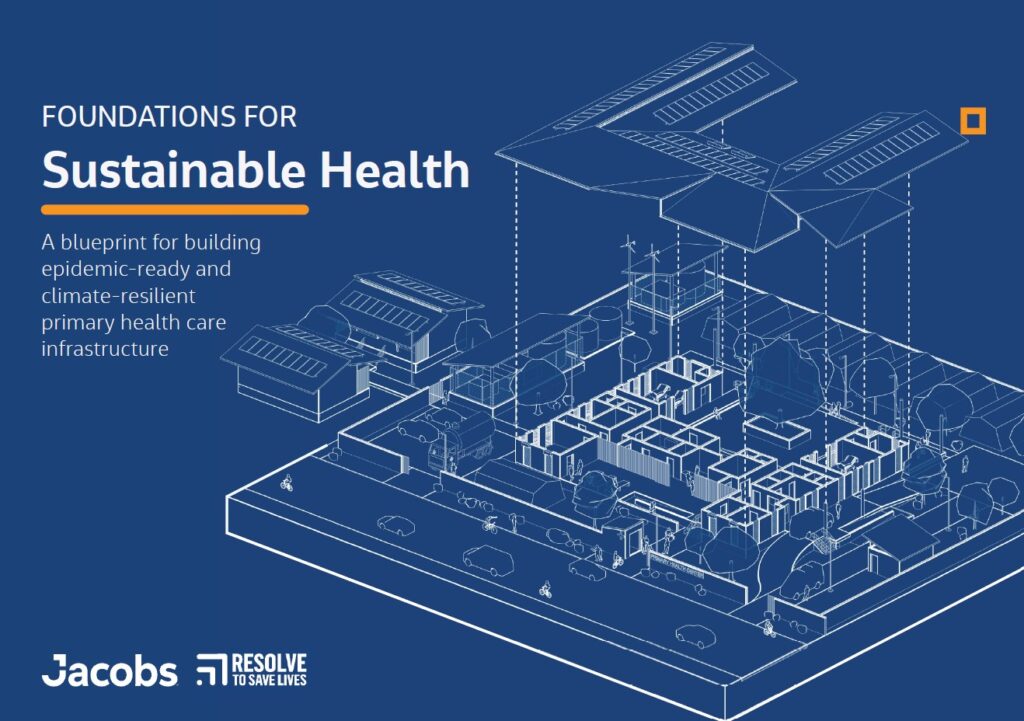
This blueprint outlines our model for epidemic-ready, climate-resilient and sustainable primary health care infrastructure using an all-hazard approach. We urge national governments to embed resilience into health and infrastructure planning. We call on donors to support integrated, scalable investments and help countries learn from what works. And we encourage facility leaders and communities to codesign and […]
Epidemic-Ready Primary Health Care (ERPHC) framework and technical package
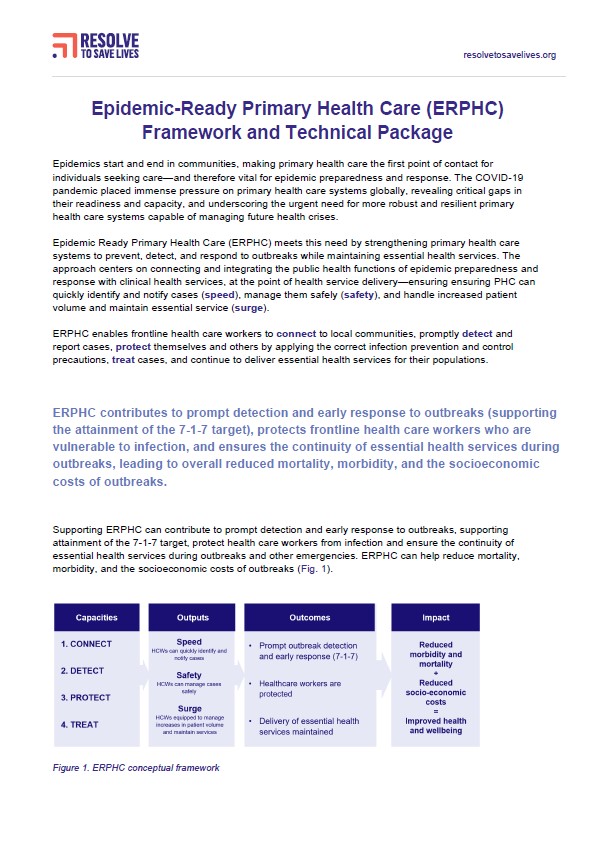
This technical toolkit explains how Epidemic-Ready Primary Health Care (ERPHC) ensures PHC systems can quickly identify and notify cases (speed), manage them safely (safety), and handle increased patient volume and maintain essential service (surge). It outlines capacities, core activities and outcomes for implementation and includes a proposed implementation model.
Using nutrient profile models to underpin key nutrition interventions
New RTSL guide explores how to use nutrient profile models to rank food based on nutritional composition and provide the scientific foundation for healthy and comprehensive nutrition policies.
9 million lives saved and counting
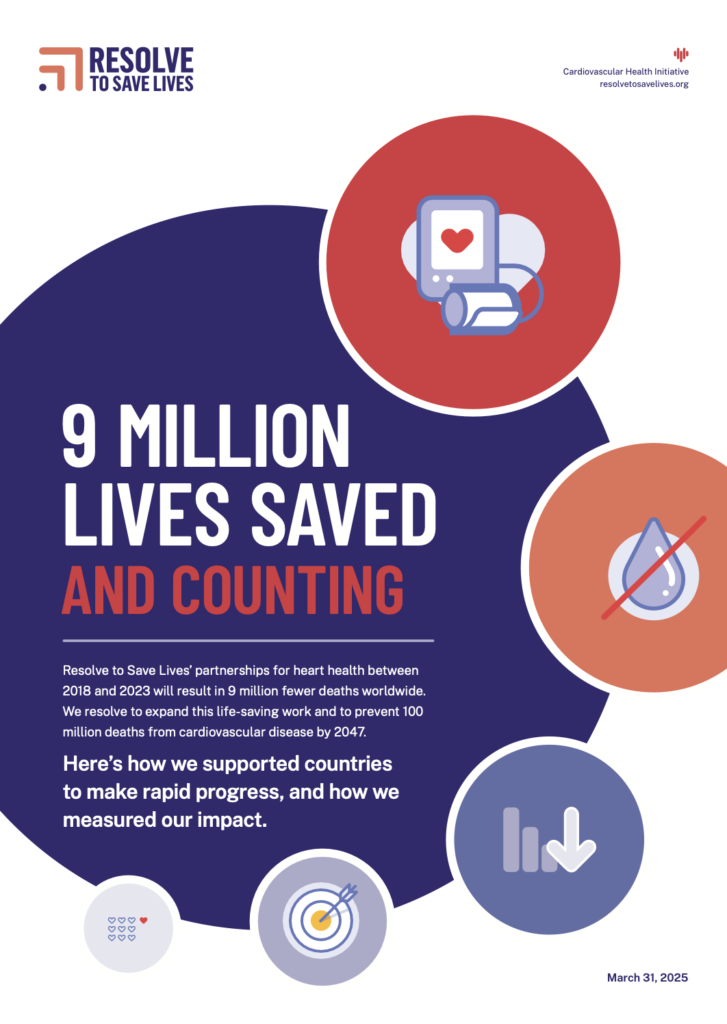
Resolve to Save Lives’ partnerships for heart health between 2018 and 2023 will result in 9 million fewer deaths worldwide. Here’s how we supported countries to make rapid progress, and how we measured our impact.
Strengthening country architecture for epidemic preparedness
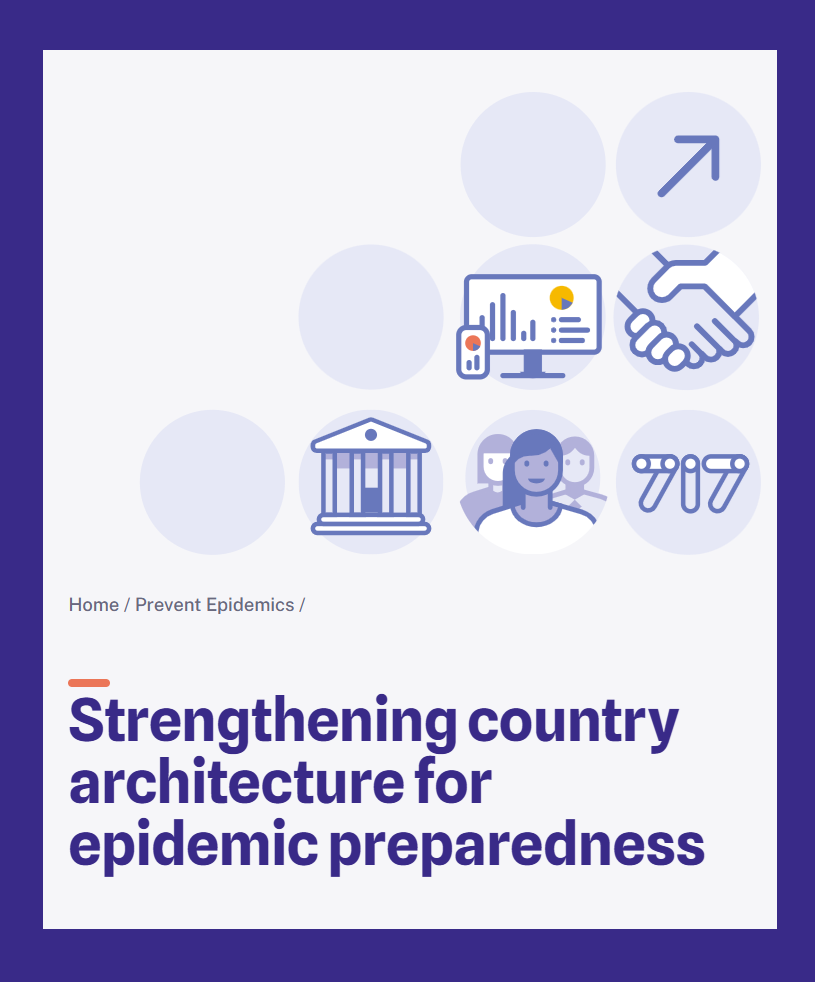
Five recommendations for strengthening health security at the country level—developed and refined hand-in-hand with governments and partners.
Guide to developing nutrition standards

Nutrition standards guide developed by Resolve to Save Lives that governments can use to ensure food and beverages purchased, served and/or sold in government settings such as schools, public hospitals, childcare or child development facilities, correctional facilities and government workplaces are healthy and low in sodium.
A research agenda for urban health security
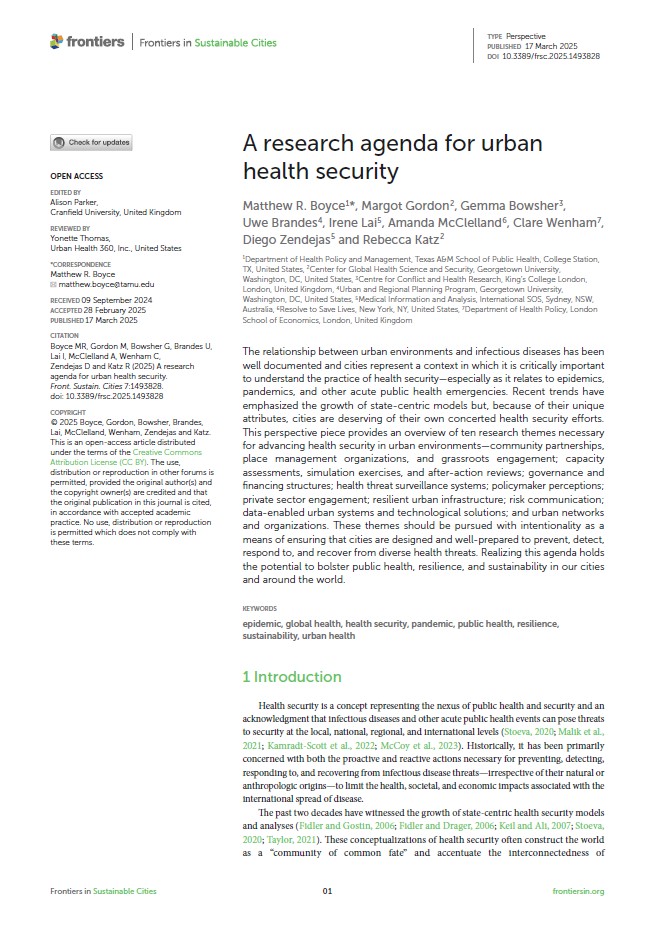
In a perspective piece published in Frontiers in Sustainable Cities, Resolve to Save Lives and partners outline ten key themes for strengthening health security in urban environments. Given cities’ unique vulnerabilities to infectious diseases, the paper highlights areas such as community partnerships, governance and financing, risk communication and resilient infrastructure as critical for epidemic preparedness. […]
Resolve to Save Lives at EPI | Lifestyle Scientific Sessions 2025

High blood pressure too often goes unnoticed. Watch the American Heart Association’s interview with Dr. Renu Garg as she details how Resolve to Save Lives works to control this silent killer with universal screening and other scalable strategies.
Fourth time a charm?—How to make the UN high-level meeting on noncommunicable diseases effective
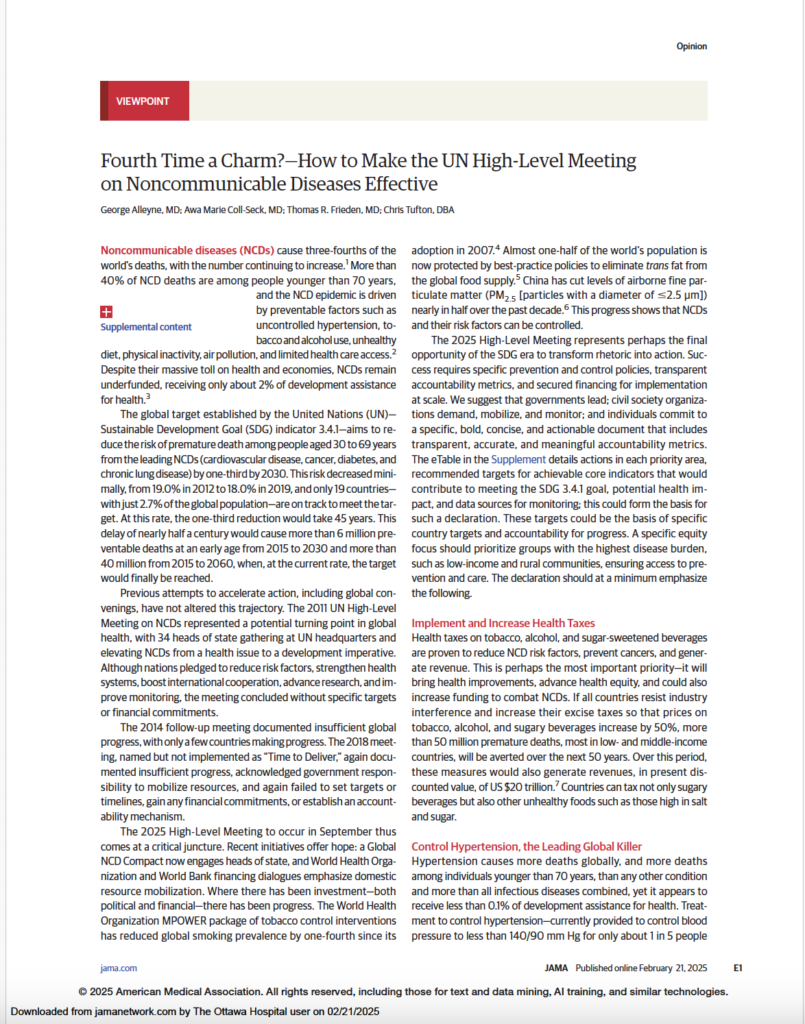
In a new article published in the Journal of the American Medical Association (JAMA), Dr. Tom Frieden and colleagues call for a focused strategy and more investment to address the world’s leading killer diseases. The article outlines specific, effective, and measurable steps countries can take to make progress and increase the chances that the upcoming […]
Trans fat elimination: Maximizing lives saved through policy implementation and enforcement

Once a best-practice trans fat elimination policy is passed and adopted, it must be implemented and enforced. This advocacy document developed by Resolve to Save Lives serves as a guide for the monitoring and enforcement of best practice policies that eliminate industrially produced trans fat from a country’s food supply.
Managing cardiovascular disease with WHO HEARTS

A two-page advocacy brief developed by Resolve to Save Lives to highlight the key elements of WHO’s HEARTS technical package for managing cardiovascular disease:
Webinar: using data on packaged food to drive policy change and save lives
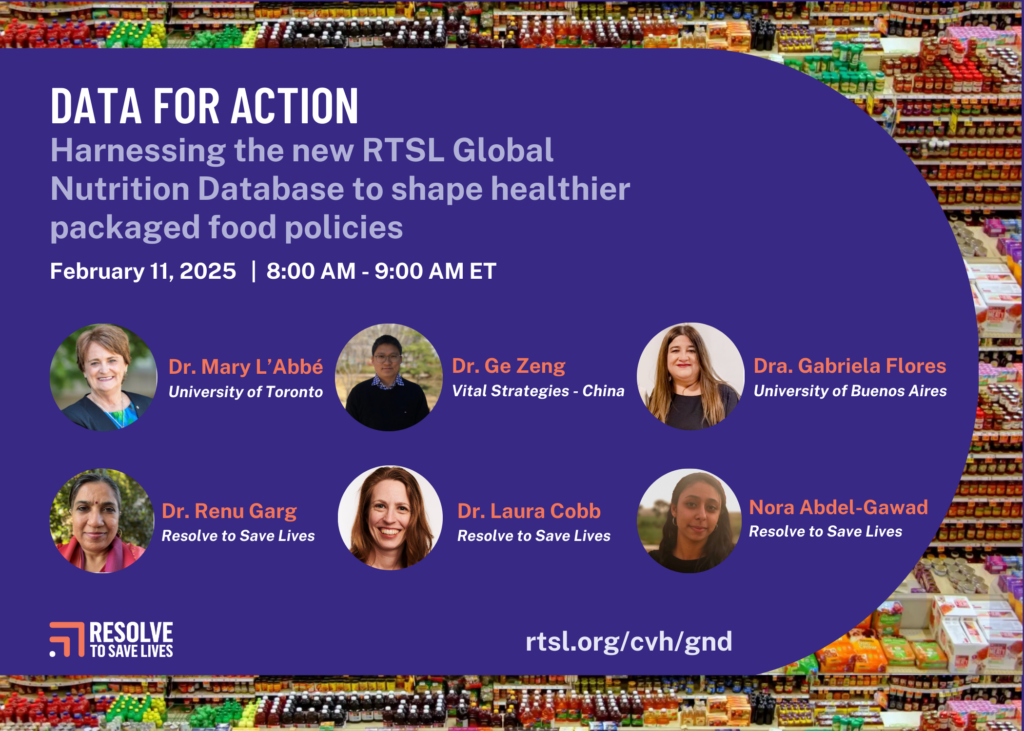
The only resource of its kind, Resolve to Save Lives’ (RTSL) new and improved Global Nutrition Database now includes 55 datasets covering the sugar, sodium, and saturated fat content of packaged foods from 36 countries. The updated database provides more detailed information on national packaged food policies in each country, as well as the updated […]
Standard clinical protocols for managing hypertension

Using simple, practical treatment protocols standardizes a high quality of care and significantly improves health outcomes in large-scale hypertension control programs. Not only do they provide easy-to-follow, step-by-step instructions that empower non-physician health care workers to manage patient care closer to home, they also unlock bulk purchasing for essential medications, lowering costs and the risk […]
Unlocking health equity through free blood pressure medications
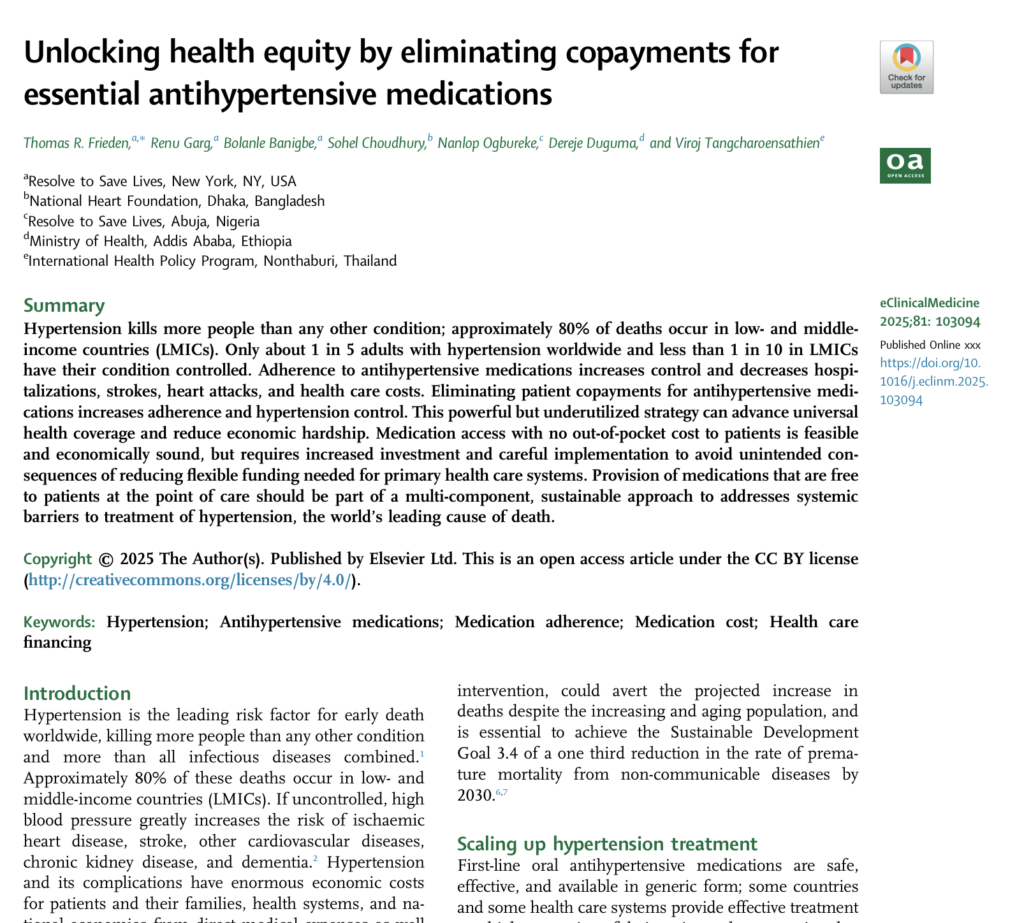
A new analysis by Resolve to Save Lives and partners is clear: removing patient copayments for anti-hypertensive medications reduces risk of heart attack, stroke, and hospitalization. Countries should explore providing free blood pressure medications as a way to save lives and meet sustainable development goals, particularly in LMICs where 80% of hypertension-related deaths occur and […]
User Guide for RTSL’s Global Nutrition Database

Detailed user guide to supplement use of Resolve to Save Lives’ Global Nutrition Database for Packaged Foods, an online, open access, centralized platform for category level packaged food data that policy advocates and decisionmakers can reference when developing food policies or tracking country progress.
Effectiveness and safety of using standardized treatment protocols for hypertension

This new systematic review demonstrates that standardized and simplified hypertension treatment protocols significantly reduce high blood pressure compared with usual hypertension care. Simple hypertension management protocols streamline treatment steps, improving outcomes for patients and making medications more available and affordable. ABSTRACT Large gaps persist in the diagnosis, awareness, treatment, and control of hypertension globally. Standardized treatment […]
Integrated Antihypertensive and Statin Treatment Protocols for Cardiovascular Disease Prevention in Low- and Middle-Income Countries
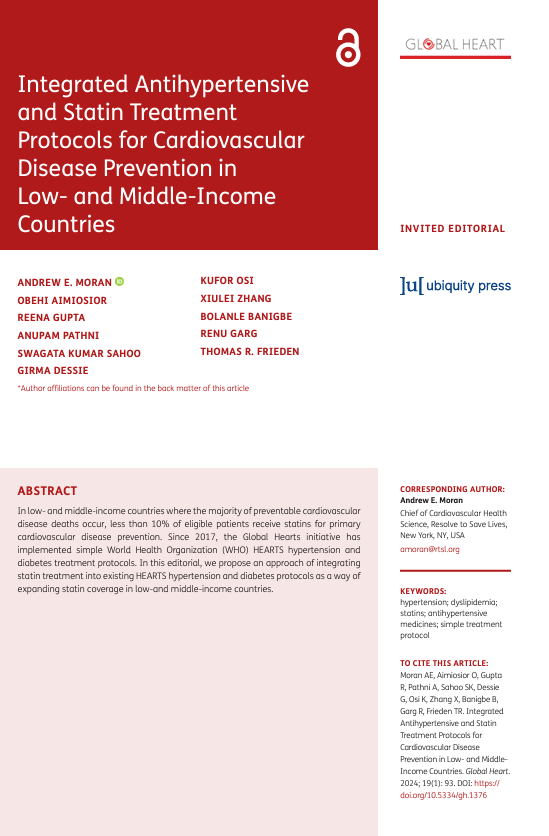
A new paper in Global Hearts co-authored by RTSL advocates for integrating hypertension medicines and cholesterol medicines into treatment plans to address the 90% of patients in low- and middle-income countries who don’t receive the cholesterol medications they need for primary cardiovascular disease prevention. Including statin treatment within existing HEARTS hypertension and diabetes protocols can help […]
Resolve to Save Lives’ new global guidelines for healthy public food procurement

Setting healthy nutrition standards for food served in schools, public hospitals, childcare facilities and government workplaces is a powerful strategy for saving lives.
Meet GIFNA – WHO’s upgraded nutrition policy database
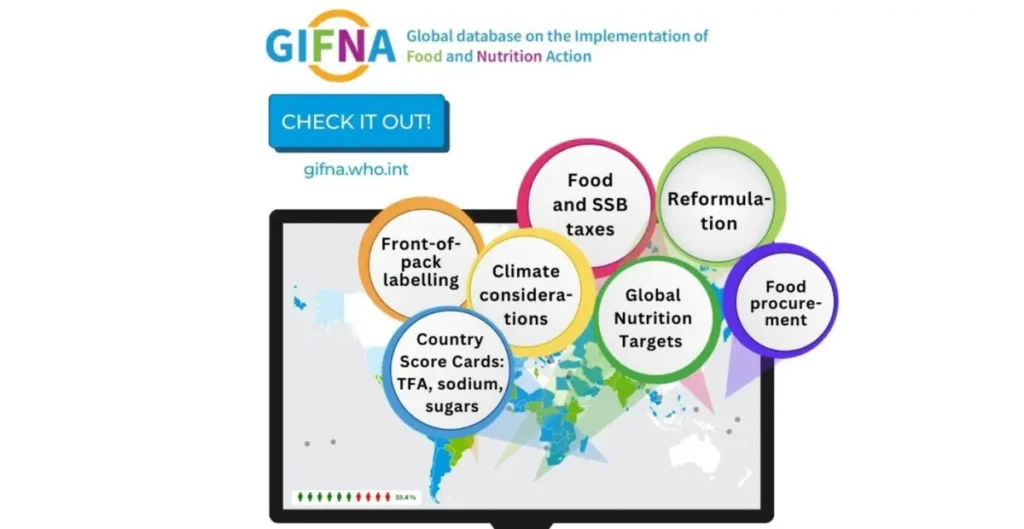
Nutrition policymakers and advocates can use WHO’s upgraded policy database to improve food environments for all.
RTSL trans fat experts speak out
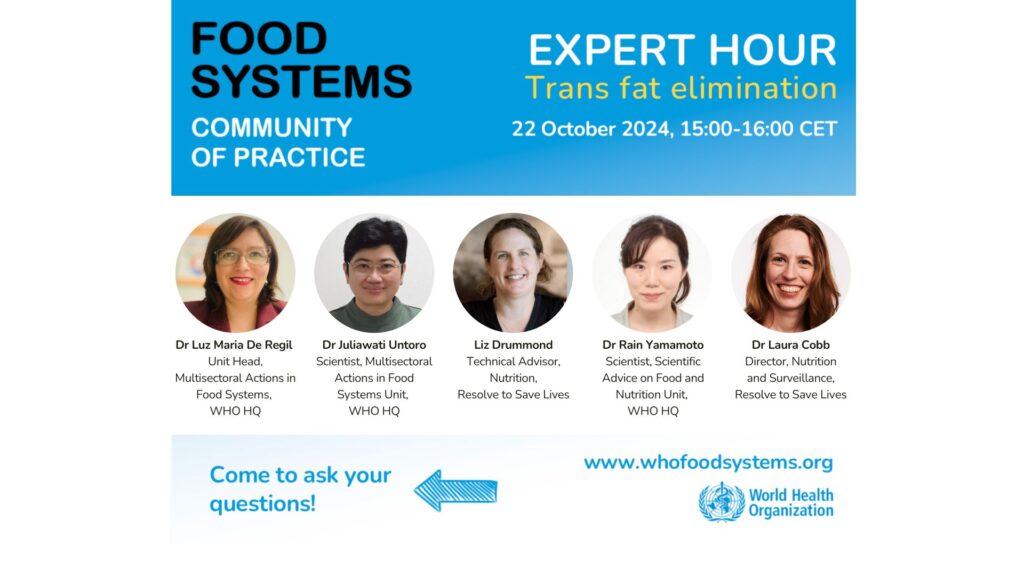
Trans fat elimination webinar features experts from Resolve to Save Lives and outlines steps to remove this harmful food additive.
Guidelines for Media Planning

A resource outlining Vital Strategies’ Breakthrough model for planning strategic communication campaigns to achieve measurable public health outcomes.
FOPWL regulations around the globe
Overview of front-of-package warning labelling policies around the world developed by GHAI